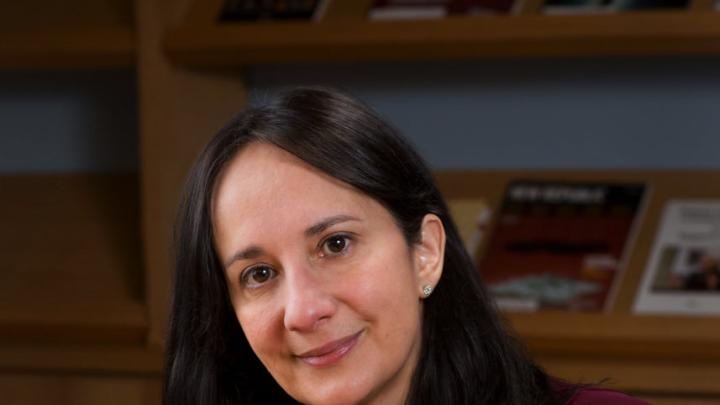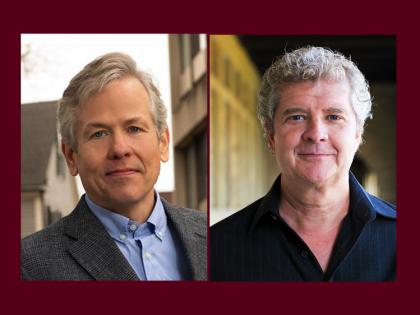In recent years, news coverage of sexual violence in India has increased, but the Indian press’s coverage has serious flaws—including a tendency to ignore victims from underprivileged backgrounds and to print sensationalistic depictions of rape—according to a Harvard Kennedy School (HKS) paper published this month. The paper, by Joanna Jolly, former South Asia editor for the BBC and a spring 2016 fellow at the school’s Shorenstein Center on Media, Politics and Public Policy, combined statistical analysis of rape coverage in some of India’s most prominent newspapers with information gleaned from her interviews with Indian journalists.
Jolly, who covered sexual violence in India herself during her time at the BBC, said her interest in the topic was sparked after a gang rape in Delhi in December 2012 made headlines in India and abroad. In that case, a woman—code-named Nirbhaya, or “fearless” in Hindi, by the press, given legal restrictions on printing her name—was raped and killed aboard a bus. The Nirbhaya case led to protests across India and eventually to changes to the Indian law on rape; as she covered incidents of sexual violence thereafter, Jolly said, she would often be asked questions ranging from “Did we not see protests a few years ago, and did we not see changes in the law?” to “Why haven’t there been any changes?” (For background on violence against women in South Asia, see Rohini Pande’s “Keeping Women Safe,” from the January-February 2015 issue.)
Seeking to answer the question of what changed in the society after the 2012 attack (or did not), Jolly began researching coverage of rape in India’s prominent English-language print media, including newspapers and magazines. (She said she would have liked to examine the Hindi-language press as well, but was limited by practical considerations.) She and her research assistant, Uzra Khan, M.P.P. ’16, determined quantitatively that coverage of sexual assault rose significantly in the press after the Nirbhaya case. They also determined that coverage of rape was more widespread in the media after December 2012 even during periods when the Nirbhaya case was out of the headlines. “I applaud the Indian print media for covering sexual violence,” Jolly said. “I think there have been huge strides ahead, in that it is now an issue that does hit the front pages a lot.”
But despite that progress, Jolly’s qualitative research—interviews with Indian reporters and editors—revealed what she saw as serious problems with press coverage of rape. The media outlets she researched were “very selective in the coverage that they gave sexual violence,” she said. Some journalists used the term PLU—short for “people like us”—to describe the kind of women whose attacks would be deemed worthy of coverage: middle- and upper-class residents of India’s cities—demographics that correlate strongly with the readership of English-language newspapers. Rape victims from rural areas, or of lower castes, such as the so-called untouchables, would rarely be the subjects of significant coverage in the English-language press.
Indian journalists also tend to select a certain type of case to cover. “Attacks were highlighted if they had an extreme form of violence in them,” Jolly said. “In a way, it was almost as if the violence sold the coverage.” Perhaps encouraged by the widespread public attention to the Nirbhaya case—in which especially gory details were reported—journalists strongly emphasized what she called “salacious” stories of attacks fueled by lust. She said that one newspaper even published an article that imagined how one of Nirbhaya’s attackers “would have felt while he was in the middle of the attack.”
Jolly also criticized some newspapers’ decision to accompany stories about sex crimes with “pictures of scantily clad women with these sort of unknown hands or shadows of men looming over them, and these women looking very helpless and victim-like.” By publishing such images, the media promotes “an almost Victorian idea of rape, of stranger danger” and takes rape “out of context and says it’s only ever done by kind of madmen, who attack women at night.” In reality, Jolly explained, rape in India is more likely to occur at home, at school, or in the workplace—and the perpetrator is more likely than not to be known to the victim.
Armed with this evidence, Jolly made a series of recommendations for what the Indian media can do to improve coverage of sexual violence. She called for “proper regulation” and “greater sensitivity,” to prevent excessively sensational coverage of rape. She urged newspapers and magazines to report on sexual violence “not just incident-to-incident, but instead as a social and economic and political phenomenon,” with a much broader scope than its current focus on affluent victims. And she said newsrooms should hire more women reporters and editors, “because studies show that when women are employed by newsrooms, they’re more likely to cover issues that relate to women.”
Jolly noted, however, that it is possible that no amount of increased sensitivity on the part of the media will totally resolve the issues she observed. Some journalists, she said, “felt they could do so much more on this issue, but they were being held back by the way sexual violence is viewed in the traditionally patriarchal society that is India. And they felt that the changes that they wanted to see were too slow in coming.”









